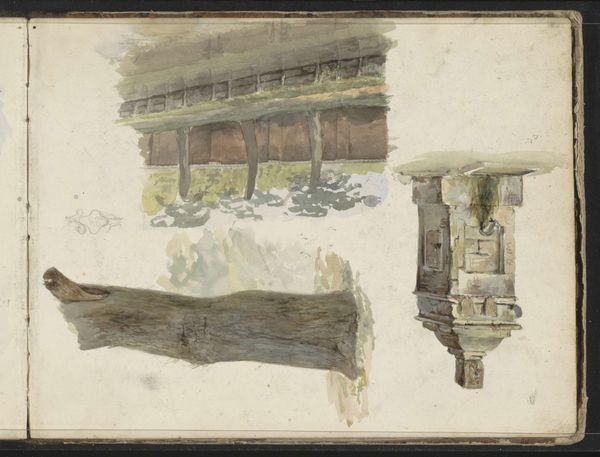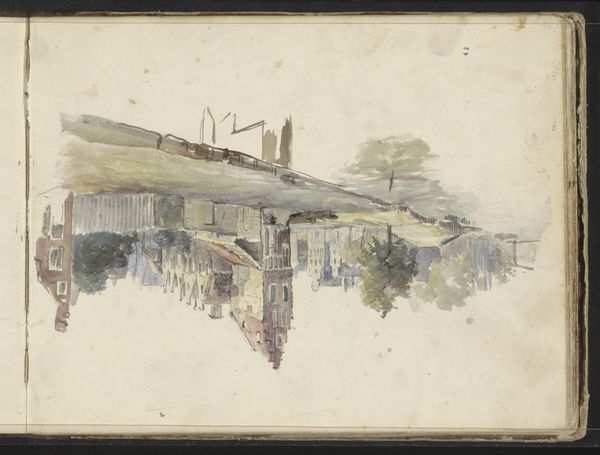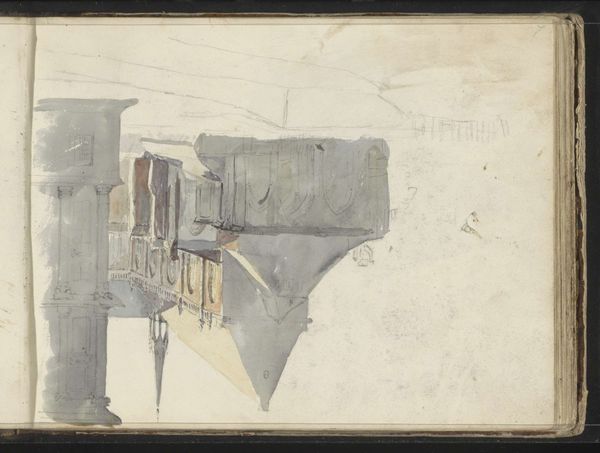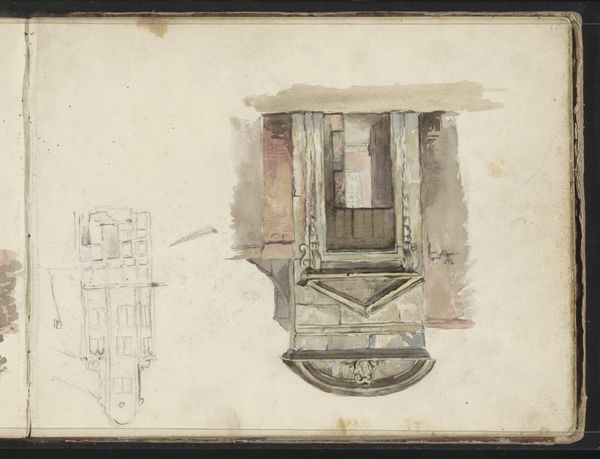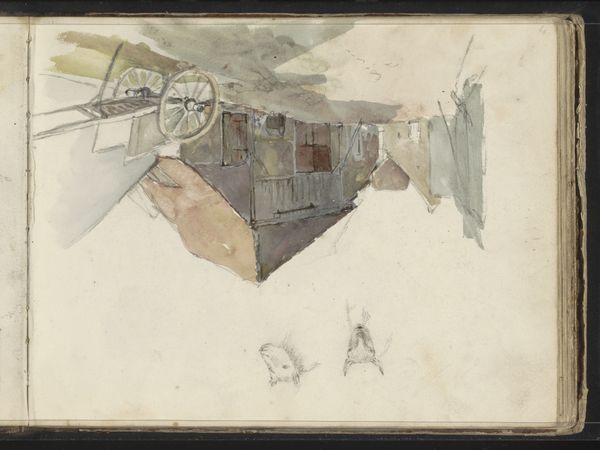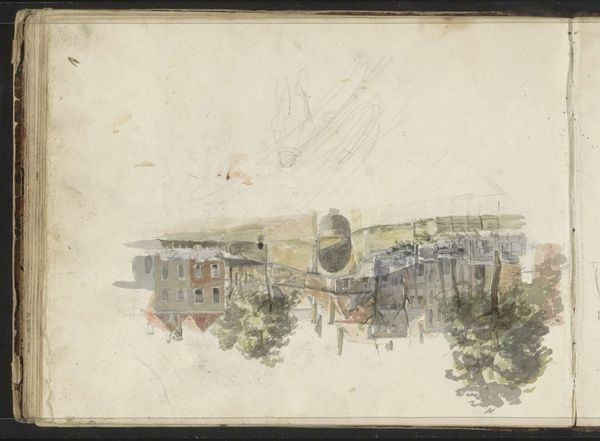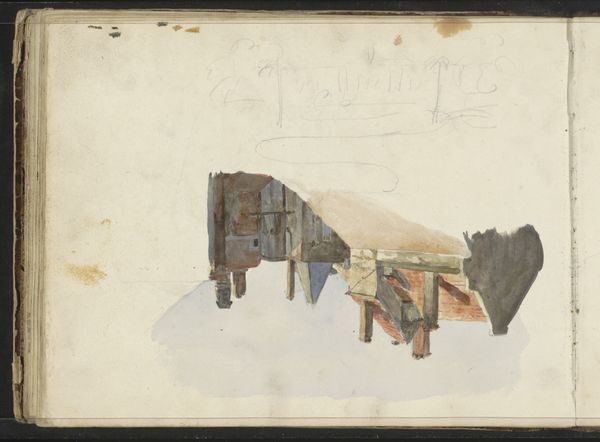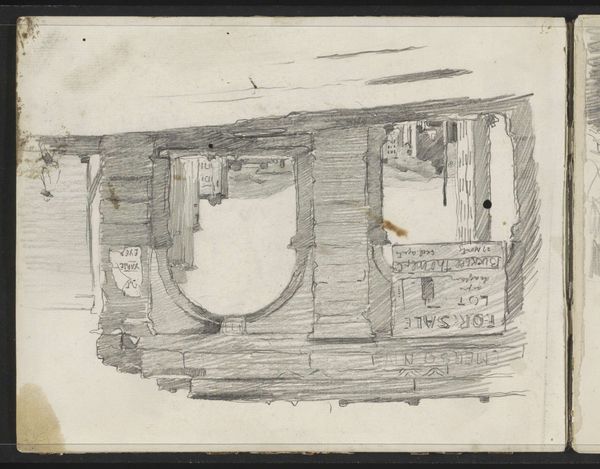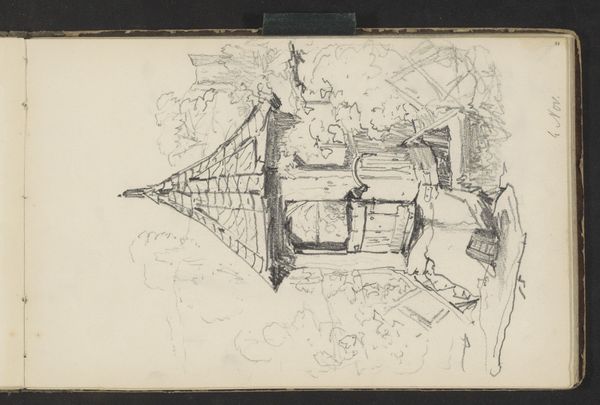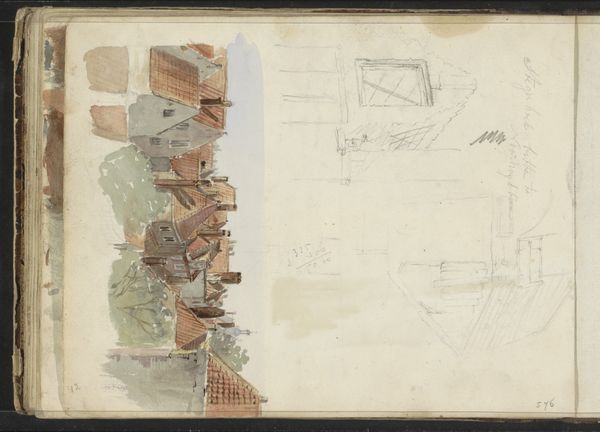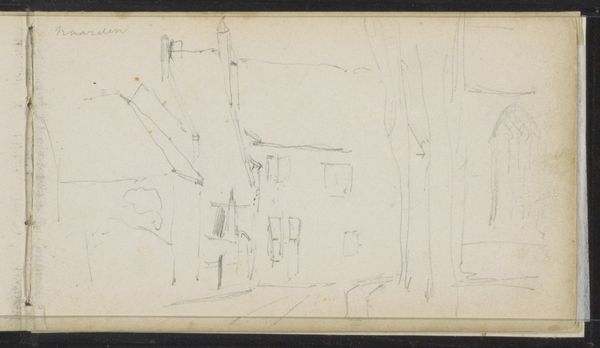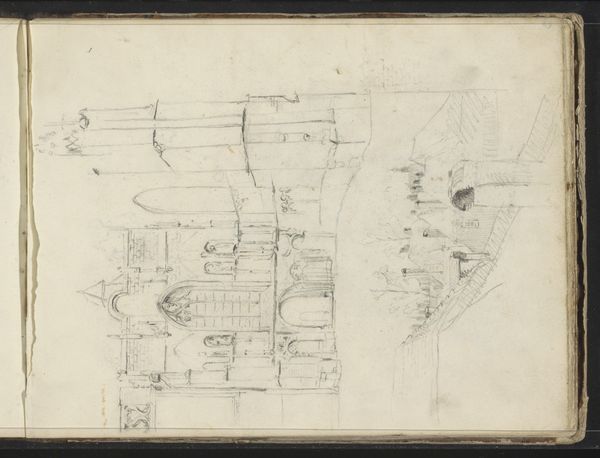
painting, watercolor
#
painting
#
landscape
#
watercolor
#
coloured pencil
#
genre-painting
#
mixed media
#
watercolor
#
realism
Copyright: Rijks Museum: Open Domain
Curator: Welcome. We're looking at Willem (II) Troost's "Boerderijen," a watercolor and colored pencil work, dating roughly from 1822 to 1893. It's currently held in the collection of the Rijksmuseum. Editor: My first impression is of something sketched quickly, perhaps outdoors. There's a certain raw, immediate quality to the light washes. You can almost feel the dampness in the air. Curator: Absolutely. I think the visible layering of washes, typical of the watercolor medium, adds to that sense of atmospheric perspective. Look at the placement of the houses – the higher one seems to echo the lower, almost mirroring it. I find myself searching for the symbolism implicit in the reflection or repetition of simple forms. Editor: It’s more than simple echoing for me, I think it exposes how provisional everything is: look how much unpainted paper remains. Notice the marks from the colored pencil indicating structure? It looks like the roof and windows are given shape using only basic angular elements to support the planes and shapes of each construction. And observe that the materials are humble, affordable. I would suggest the choice of subject matter is just a quick sketch—more accessible. Not so burdened with classical ideals. Curator: A quick study, perhaps, but even so, one still finds echoes of familiar themes within the artistic record, particularly Dutch art history. Aren't you intrigued by the contrast between the vulnerability suggested by the open windows and doors and the stability conveyed by the solid geometry of each house? The human element, even absent, speaks volumes. Editor: But is it really stable? To my eyes it reads less as permanent solidity and more a study of modest constructions created in the moment with few materials to hand. This feels quite democratic to me – elevating everyday life through the artist’s careful considerations of the texture of the buildings and the play of light upon them, and done in a cheap manner, for us. Curator: And now you point it out I note its very much lacking humans; maybe these farms have become shells of themselves? It really lends itself to a contemporary reading when viewing its materiality and simplicity alongside its setting… almost a comment on sustainability for that time? It makes one wonder what memories might attach themselves to the structures represented within it over the centuries? Editor: Indeed. So much we don’t know that is provoked in viewing this painting...
Comments
No comments
Be the first to comment and join the conversation on the ultimate creative platform.
